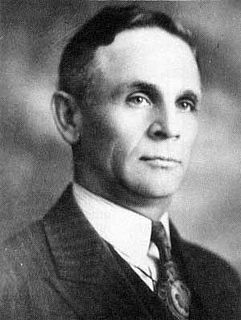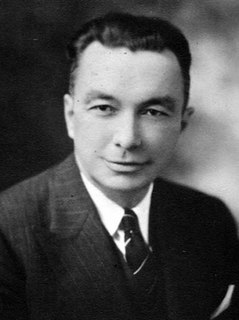The Progressive Party of Canada was a federal-level political party in Canada in the 1920s until 1930. It was linked with the provincial United Farmers parties in several provinces, and it spawned the Progressive Party of Saskatchewan, and the Progressive Party of Manitoba, which formed the government of that province. The Progressive Party was part of the farmers' political movement that included federal and provincial Progressive and United Farmers' parties.
The Canadian social credit movement is a political movement originally based on the Social Credit theory of Major C. H. Douglas. Its supporters were colloquially known as Socreds in English and créditistes in French. It gained popularity and its own political party in the 1930s, as a result of the Great Depression.
There have been various groups in Canada that have nominated candidates under the label Labour Party or Independent Labour Party or other variations from the 1870s until the 1960s. These were usually local or provincial groups using the Labour Party or Independent Labour Party name, backed by local labour councils or individual trade unions. There was an attempt to create a national Canadian Labour Party in the late 1910s and in the 1920s, but these were only partly successful.

John Bracken was an agronomist, the 11th and longest-serving premier of Manitoba (1922–1943) and leader of the Progressive Conservative Party of Canada (1942–1948).
Liberal-Progressive was a label used by a number of candidates in Canadian elections between 1925 and 1953. In federal and Ontario politics, there was no Liberal-Progressive party: it was an alliance between two parties. In Manitoba, a party existed with this name.

The Manitoba Liberal Party is a political party in Manitoba, Canada. Its roots can be traced to the late 19th century, following the province's creation in 1870.
The Progressive Conservative Party of Manitoba is a centre-right political party in Manitoba, Canada. It is currently the governing party in the Legislative Assembly of Manitoba, after winning a substantial majority in the 2016 election and maintaining a majority in the 2019 election.

Douglas Lloyd Campbell was a politician in Manitoba, Canada. He served as the 13th premier of Manitoba from 1948 to 1958. He was a member of the Legislative Assembly of Manitoba for 47 years, longer than anyone in the province's history.

The 1945 Canadian federal election was held June 11, 1945, to elect members of the House of Commons of Canada of the 20th Parliament of Canada. Prime Minister William Lyon Mackenzie King's Liberal government was re-elected to its third consecutive government, although this time with a minority government as the Liberals fell five seats short of a majority.
Seymour James Farmer was a politician in Manitoba, Canada. He served as Winnipeg MLA from 1922 to 1949. During this time he also served as mayor of Winnipeg 1923-1924 and later as city councillor in the late 1920s and in the 1930s. He was the leader of the Manitoba Co-operative Commonwealth Federation from 1935 to 1947. He served as a cabinet minister in Manitoba's World War I coalition government.

Errick French Willis was a politician in Manitoba, Canada. He served as leader of the province's Conservative Party between 1936 and 1954, and was responsible for beginning and ending the party's alliance with the Liberal-Progressive Party. He also served as Manitoba's 15th Lieutenant Governor between 1960 and 1965.
Jacob M. Froese was a politician in the Canadian province of Manitoba. He was the province's only Social Credit MLA between 1959 and 1973, and was the party's leader for most if not all of the period from 1959 to 1977.
Sydney Ernest Rogers was a Manitoba politician. Between 1937 and 1941, he was the leader of the province's Social Credit Party.
John Stewart McDiarmid was a Manitoba politician. He held senior ministerial positions in the governments of John Bracken, Stuart Garson and Douglas Campbell, and served as the province's 14th Lieutenant Governor between 1953 and 1960.
Wallace Conrad Miller was a Canadian politician who served in the Legislative Assembly of Manitoba from 1936 to 1959, and was a cabinet minister in the government of Douglas L. Campbell.
The 1953 Manitoba general election was held on June 8, 1953 to elect Members of the Legislative Assembly of the Province of Manitoba, Canada. The election produced a majority government for the Liberal-Progressive party led by Douglas Campbell. His party won thirty-two of fifty-seven seats although with but 39 percent of the vote overall.
William Lewis Bullmore was a politician in Manitoba, Canada. He served in the Legislative Assembly of Manitoba from 1953 to 1958, initially as a Social Credit representative and later as an independent.
James O. McLenaghen was a politician in Manitoba, Canada. He served in the Legislative Assembly of Manitoba from 1927 until his death, and was a cabinet minister in the governments of John Bracken, Stuart Garson and Douglas Campbell.
Norman Leslie Turnbull was a politician in Manitoba, Canada. He served in the Legislative Assembly of Manitoba from 1936 to 1949 as a representative of the Social Credit League, and was a cabinet minister in the governments of John Bracken and Stuart Garson.
Elin Salome Halldorson was a politician in Manitoba, Canada.




